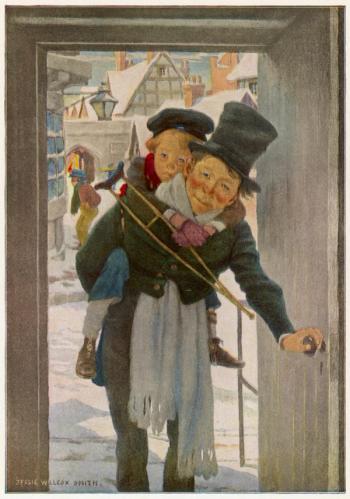
- October 2025
- Volume 41
- Issue 7
Combination vaccines: Can fewer shots mean better outcomes?
Combination vaccines enhance childhood immunization by reducing the number of shots, improving adherence, and potentially increasing overall vaccination rates.
In 1999, the American Academy of Pediatrics (AAP), in conjunction with the American Academy of Family Physicians and the Advisory Committee on Immunization Practices, released formal recommendations regarding the use of combination vaccines for childhood immunizations.1 This coalition recommends combination vaccines whenever any components of the combination are indicated and their other components are not contraindicated, even when components of the combination may be duplicative based on the child’s vaccine history.1 The report solidified clinical arguments for the widespread use of combination vaccines when available and indicated that more combination vaccines were on the way.
Now, more than 25 years later, many more vaccines that contain multiple antigens or strains of antigens have become available for children. There are 17 vaccines licensed by the FDA that protect against more than one organism, in addition to vaccines that protect against more than one strain of a single antigen, which are also considered combination vaccines.2 These include combinations such as the DTaP-IPV-Hib-HepB (diphtheria, tetanus, pertussis, inactivated poliovirus, Haemophilus influenzae type b, and hepatitis B) vaccine, and the MMRV (measles, mumps, rubella, and varicella). Multistrain combination vaccines are also of high clinical importance in pediatric patients. One of the newest combination vaccines is the pentavalent meningococcal, which was introduced in 2024 and adds the MenB (meningococcal B) serogroup to the existing combined MenACWY vaccine for patients who would be scheduled to receive each individually at the same visit.
Reducing the number of injections required when using combination vaccines vs monovalent vaccines can be profound. Combination and monovalent products can generally be used interchangeably with similar components by the same manufacturer. So, in the event of shortages or discontinuations, the single-antigen vaccines remain options for completing the series.3 Viable combination vaccine options are illustrated in the Table for universal vaccination recommendations by the CDC for a 2-month-old infant, as an example.
One can intuit that combination vaccines could reduce delays in disease immunity, increase efficiency in medical care, and reduce discomfort and fear for children receiving vaccines.4 Social and economic disparities in access to immunizations could also be lessened with fewer injections and fewer health facility visits for the same coverage.5,6 In fact, these benefits have been published extensively. For example, a study by Kurosky et al showed that children who received at least one combination vaccine had significantly higher completion rates of the routine series. Additionally, the full childhood series had a lower completion rate among children who received only single-antigen vaccines (50%) vs combination (69%).7 Other studies have shown that the immunogenicity and overall safety profile of combination vaccines are comparable to single-antigen.8 Regarding the use of combination vaccines for catch-up schedules or incomplete childhood series, combination vaccines are reported to be a convenient and helpful method of ensuring a complete series, as the potential downside of waiting until the longest minimum interval is met between doses is outweighed by the lower number of visits and health care touchpoints.9,10
It is primarily due to the benefits detailed above that interest in combination vaccinations continues to grow. One area of particular interest is utilizing combination vaccines to increase population uptake of certain immunizations, including COVID-19. Specifically, pairing the influenza and COVID-19 immunizations into a single vaccine that could be given annually has garnered much interest among drug manufacturers. Recent literature shows that most US adults would prefer a combination vaccine for these 2 antigens rather than individual doses: Summers et al reported a 41% preference for a combination, and Poulos et al reported a 62% preference.9,10 It is still worth noting that 7.4% to 28% of respondents in these studies preferred neither vaccine at all, giving pause to the idea of combining antigens to increase uptake. Multiple pharmaceutical companies have announced combination influenza/COVID-19 vaccine candidates in the past couple of years.11-15 Thus far, one phase 3 trial has been published showing positive immunogenic and safety data in support of an influenza/COVID-19 product.16 However, all data to date has been in adult patients aged 50 years and older, keeping a combination product for children or adolescents a future pursuit. Another complicating factor pertinent to this immunization is the frequently shifting recommendations around the schedule and patients who are eligible to receive it. This poses difficulty for drug manufacturers seeking approval in targeted age groups, which may shortly be deemed “not recommended” to receive the COVID-19 component of the combo product.
While much attention has been paid to combining influenza and COVID-19 immunizations, this is certainly not the only combination currently in the works. The Rhyme study out of the United Kingdom is evaluating the viability of a combination respiratory syncytial virus and human metapneumovirus vaccination. This study is targeting young infants and children who are at the highest risk of developing these seasonal (and often overlapping) respiratory viruses.17 Another intriguing opportunity for the adolescent population suggested by Nguyen et al is the potential combination of HepB and HPV vaccinations as an overall cancer prevention measure. HPV is another vaccine that has had lower-than-average uptake among the pediatric population, and this study found that coadministration of the 2 immunizations led to much higher protection rates against HPV.18
One concern that the 1999 AAP report raised was the ambiguity and potential confusion resulting from immunization records that struggle with accurately recording combination vaccinations with overlapping strains and/or alongside single-strain vaccinations. Recent reports indicate that this dilemma is still not adequately solved. The similarity in nomenclature among combination vaccines has added to the ambiguity of immunization records and electronic health record systems continue to struggle when suggesting future doses with a vaccine history that includes combinations.19,20 Of course, challenges remain with the utilization of vaccines containing multiple components, including increases in adverse effects resulting from these injections, and the best path forward when a child has an adverse and/or allergic reaction to a combination vaccination. Despite these difficulties, combination products have documented benefits for children and continue to be something that patients, families, drug manufacturers, and health care professionals find value in pursuing.21,22
References
1. Combination vaccines for childhood immunization: recommendations of the Advisory Committee on Immunization Practices (ACIP), the American Academy of Pediatrics (AAP), and the American Academy of Family Physicians (AAFP). Am Fam Physician. 1999;59(9):2565-2574.
2. Vaccines licensed for use in the United States. FDA. Updated May 31, 2025. Accessed August 25, 2025.
3. Timing and spacing of immunobiologics. CDC. Updated July 24, 2024. Accessed August 25, 2025. https://www.cdc.gov/vaccines/hcp/imz-best-practices/timing-spacing-immunobiologics.html
4. Smith PJ, Humiston SG, Parnell T, Vannice KS, Salmon DA. The association between intentional delay of vaccine administration and timely childhood vaccination coverage. Public Health Rep. 2010;125(4):534-541. doi:10.1177/003335491012500408
5. Peters DH, Garg A, Bloom G, Walker DG, Brieger WR, Rahman MH. Poverty and access to health care in developing countries. Ann N Y Acad Sci. 2008;1136:161-171. doi:10.1196/annals.1425.011
6. Ma J, Li Z, Sun Y, Liu Z, Dang Y, Huang Y. Improving innovation and access to combination vaccines for childhood immunization in China. Int J Environ Res Public Health. 2022;19(23):15557. doi:10.3390/ijerph192315557
7. Kurosky SK, Davis KL, Krishnarajah G. Effect of combination vaccines on completion and compliance of childhood vaccinations in the United States. Hum Vaccin Immunother. 2017;13(11):2494-2502. doi:10.1080/21645515.2017.1362515
8. Liu B, Cao B, Wang C, et al. Immunogenicity and safety of childhood combination vaccines: a systematic review and meta-analysis. Vaccines (Basel). 2022;10(3):472. doi:10.3390/vaccines10030472
9. Koslap-Petraco MB, Judelsohn RG. Societal impact of combination vaccines: experiences of physicians, nurses, and parents. J Pediatr Health Care. 2008;22(5):300-309. doi:10.1016/j.pedhc.2007.09.004
10. Happe LE, Lunacsek OE, Kruzikas DT, Marshall GS. Impact of a pentavalent combination vaccine on immunization timeliness in a state Medicaid population. Pediatr Infect Dis J. 2009;28(2):98-101. doi:10.1097/INF.0b013e318187d047
11. Summers RJ, Katz ML, Reiter PL. Willingness among adults in the United States to receive a combination influenza and COVID-19 vaccine. Hum Vaccin Immunother. 2025;21(1):2532272. doi:10.1080/21645515.2025.2532272
12. Poulos C, Buck PO, Ghaswalla P, Rudin D, Kent C, Mehta D. US consumer and healthcare professional preferences for combination COVID-19 and influenza vaccines. J Med Econ. 2025;28(1):279-290. doi:10.1080/13696998.2025.2462412
13. Two combination vaccine candidates for prevention of influenza and COVID-19 granted fast track designation in the US. News release. Sanofi. December 11, 2024. Accessed August 25, 2025.
14. Pfizer and BioNTech receive U.S. FDA fast track designation for single-dose mRNA-based vaccine candidate against COVID-19 and influenza. News release. Pfizer. December 9, 2022. Accessed August 25, 2025.
15. U.S. FDA removes clinical hold on Novavax’s COVID-19-influenza combination and stand-alone influenza phase 3 trial. News release. Novavax. November 11, 2024. Accessed August 25, 2025.
16. McGovern G. FDA grants fast track designations to 2 combination influenza and COVID-19 vaccine candidates. Pharmacy Times. December 11, 2024. Accessed August 25, 2025.
17. Rubin R. Combined vaccines against COVID-19, flu, and other respiratory illnesses could soon be available. JAMA. 2024;331(22):1880-1882. doi:10.1001/jama.2024.7370
18. Rudman Spergel AK, Wu I, Deng W, et al. Immunogenicity and safety of influenza and COVID-19 multicomponent vaccine in adults ≥50 years: a randomized clinical trial. JAMA. 2025;333(22):1977-1987. doi:10.1001/jama.2025.5646
19. Rhyme trial: a clinical trial of investigational vaccines for RSV and hMPV in infants and young children. Moderna Clinical Trials. Accessed August 25, 2025.
20. Nguyen CT, Tanjasiri SP. Predictors of HPV and Hep B vaccination beliefs and behaviors among Vietnamese American young adults: implications for dual vaccine coverage. Hum Vaccin Immunother. 2025;21(1):2532275. doi:10.1080/21645515.2025.2532275
21. Fatima M, Hong KJ. Innovations, challenges, and future prospects for combination vaccines against human infections. Vaccines (Basel). 2025;13(4):335. doi:10.3390/vaccines13040335
22. New and views: combination vaccines and the catch-up schedule. Children’s Hospital of Philadelphia. Accessed August 25, 2025.
Articles in this issue
about 2 months ago
Screening for suicide ideation and suicide attempts is a priority2 months ago
Letter from the editor, October 20253 months ago
5-week-old with blood under the tongue3 months ago
Vaccines remain the cornerstone of child health3 months ago
Physicians give AI scribes a thumbs-upNewsletter
Access practical, evidence-based guidance to support better care for our youngest patients. Join our email list for the latest clinical updates.








